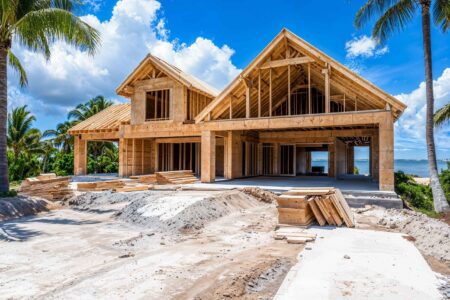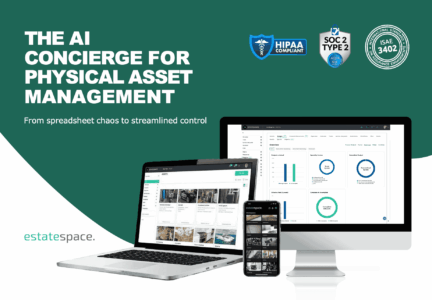Physical asset diversification isn’t just investment theory – it’s about creating wealth that you can actually see, touch, and enjoy. You’ve probably heard the saying “don’t put all your eggs in one basket” countless times. But here’s what’s interesting: when it comes to building lasting wealth, the most successful families aren’t just diversifying across financial instruments. They’re creating balanced portfolios that include meaningful physical assets.
Let’s be honest – managing complex portfolios can feel overwhelming. Yet the families who preserve wealth across generations have discovered something powerful: combining tangible and intangible assets creates both financial security and emotional connection.
Why Physical Assets Matter More Than You Think
Picture this: you’re reviewing a client’s portfolio, and it’s filled with sophisticated financial instruments that require constant monitoring by specialists. Meanwhile, their vacation home has appreciated steadily, provides ongoing enjoyment, and creates lasting family memories.
Here’s what most portfolio discussions miss: physical assets offer benefits that go far beyond returns on paper.
They Connect You to Your Wealth
Think about it – when you own real estate, art, or collectibles, you develop an intuitive understanding of their value and condition. You don’t need a Bloomberg terminal to know if your property needs maintenance or if your classic car collection is appreciating. This tangible connection helps you make more informed decisions about your overall portfolio.
They Interest the Next Generation
While your children might glaze over during discussions about hedge fund performance, they light up when talking about the family vineyard or the classic cars in your garage. Physical assets create emotional connections that make wealth transfer conversations natural rather than awkward.
The Smart Approach to Physical Asset Diversification
Now, let’s talk strategy. Effective physical asset diversification isn’t about buying everything you like – it’s about creating a balanced approach that serves both financial and personal goals.
Real Estate Forms the Foundation
Most sophisticated investors understand real estate’s role in diversification. However, the key is thinking beyond just investment properties. Your personal residences, vacation homes, and even land holdings all contribute to your overall asset allocation. The property where your family makes memories often becomes the most treasured part of your legacy.
Collectibles Add Passion and Value
Here’s where physical asset diversification gets interesting. Whether it’s art, wine, vintage cars, or rare books, collectibles allow you to invest in things you’re passionate about. Yes, they require expertise and proper maintenance, but they also provide enjoyment that stocks and bonds simply can’t match.
The secret is choosing areas where you have genuine interest and knowledge. Your enthusiasm becomes a natural advantage in making smart acquisition decisions.
Liquidity Balances Everything
Of course, physical assets aren’t always easy to liquidate quickly. That’s exactly why smart diversification includes readily liquid investments alongside your tangible holdings. When opportunities arise or cash needs emerge, you want financial flexibility without being forced to sell cherished assets.
Physical Asset Diversification Best Practices
Successful physical asset diversification requires more than just buying different types of tangible investments. Here’s how to do it thoughtfully:
Start with Complete Inventory
Before adding new physical assets, get a clear picture of what you already own. Many families discover they’re more diversified than they realized once they properly catalog everything from inherited jewelry to rarely-used vacation properties.
This inventory becomes the foundation for strategic decisions about future acquisitions and optimal insurance coverage.
Consider Maintenance Requirements
Every physical asset demands ongoing care. Properties need maintenance, vehicles require service, and collectibles often need climate-controlled storage. Factor these costs into your diversification strategy, and ensure you have systems in place to protect your investments.
Plan for Transfer
Unlike stocks that transfer with paperwork, physical assets require more complex succession planning. Consider how each asset fits into your estate plan and whether future generations will have the knowledge and interest to maintain them properly.
Technology Makes Physical Asset Diversification Easier
Managing diverse physical assets used to require endless spreadsheets and filing cabinets. Today’s technology solutions change everything by providing centralized oversight of all your tangible investments.
Modern platforms can track maintenance schedules, insurance policies, valuations, and documentation for everything from real estate to collectibles. This means you can make informed decisions about your physical asset allocation without drowning in administrative details.
AI-powered systems can even alert you to maintenance needs, insurance renewals, and market opportunities, ensuring your physical assets remain well-managed and continue appreciating.
The Emotional Value of Balanced Portfolios
Here’s something financial advisors rarely discuss: properly diversified physical assets create emotional security that numbers on a screen simply can’t provide. When market volatility creates anxiety, there’s comfort in knowing you own tangible assets that retain value and meaning regardless of daily fluctuations.
Furthermore, physical assets often perform well during inflationary periods when traditional investments struggle. Real estate, commodities, and collectibles frequently maintain purchasing power when currency values decline.
Building Your Physical Asset Diversification Strategy
Ready to create a more balanced approach to wealth building? Start by evaluating your current asset allocation between financial and physical investments.
This Month: Inventory all your physical assets and assess their current role in your overall portfolio. You might be surprised by what you discover.
Next Quarter: Identify gaps in your diversification strategy. Are you overweighted in real estate but lacking exposure to other physical assets? Or perhaps you have plenty of collectibles but insufficient liquid investments for flexibility?
Ongoing: Develop systems for managing your physical assets efficiently. The right technology platform can eliminate the administrative burden while ensuring optimal care and performance.
Remember, physical asset diversification isn’t about choosing between financial and tangible investments – it’s about creating a balanced portfolio that serves both your financial goals and personal values.
For instance, EstateSpace’s platform is designed specifically to help families and asset managers oversee diverse physical asset portfolios. Instead of managing scattered information across multiple systems, you get centralized oversight that makes diversification decisions clearer and simpler.
Ready to explore how balanced physical asset diversification could enhance your wealth strategy? Discover what’s possible with EstateSpace and see why sophisticated investors are taking a more holistic approach to portfolio construction.
This article explores practical strategies for physical asset diversification that help families build wealth while maintaining the emotional connections that make prosperity meaningful.



